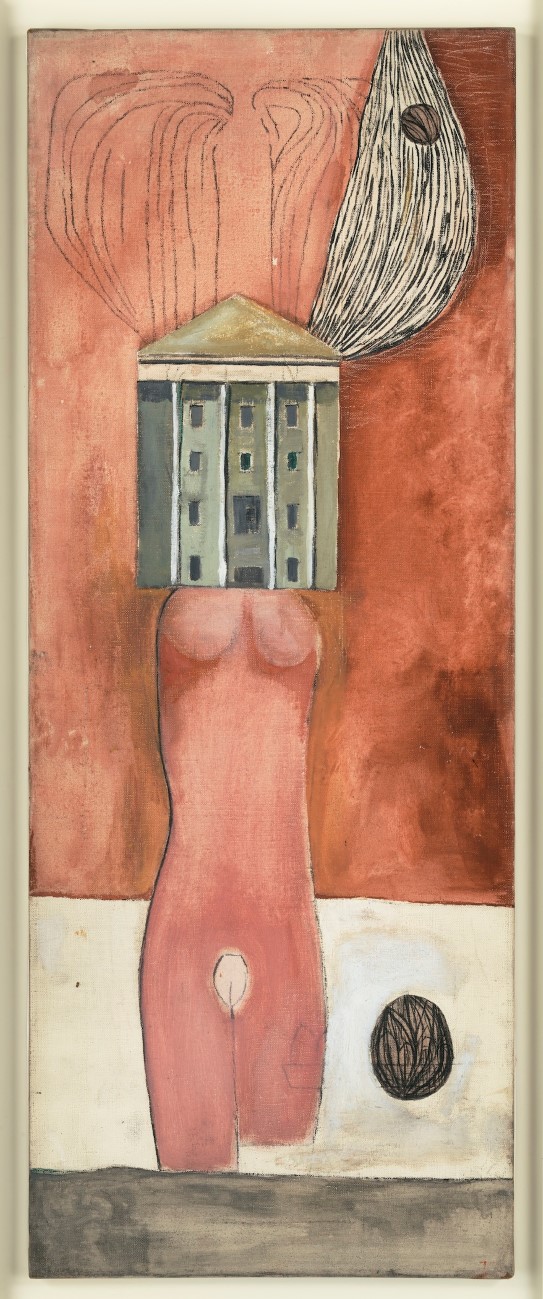Femme Maison
Louise Bourgeois
Transcription
Elin-Therese Aarseth
Naked woman, flower woman, bird woman. Woman crying.
There were countless women both in the life and in the works of Pablo Picasso, and these are some of the titles of his portraits of women.
Narrator
This is Elin-Therese Aarseth, art historian at the National Museum.
Elin-Therese Aarseth
Picasso’s Smiling Woman from 1943, shows a naively rendered creature with a beak, small eyes, and a strand of hair that kind of looks like a feather. And detached from the rest of the face, we see a comical grin hovering at the bottom right of the shapeless head. Probably we are looking at a portrait of Dora Maar, she was a French photographer, painter, and poet but she was also Picasso’s mistress and muse.
Narrator
Picasso and Louise Bourgeois never met. But we do know that Bourgeois admired Picasso, and she may have seen the paintings of the smiling bird women in the late nineteen forties.
Elin-Therese Aarseth
During this period, she also painted and drew several abstracted creatures with feathers, wings, eggs and small round eyes. The woman in her painting Roof Song from 1947 even has a similar comical smile as in Picasso’s picture. In fact, Bourgeois referred to many of these paintings as self-portraits.
Like Picasso, Bourgeois was concerned with the metamorphoses of the female body. In her so-called Femme Maison pictures, she combines the female body with houses. Femme Maison – woman house, or house woman. Unlike Picasso's sweet flower and bird women, Bourgeois' housewives are not only beautiful, they are literally under house arrest. Their head is trapped; they are housewives who have grown out of their surroundings.